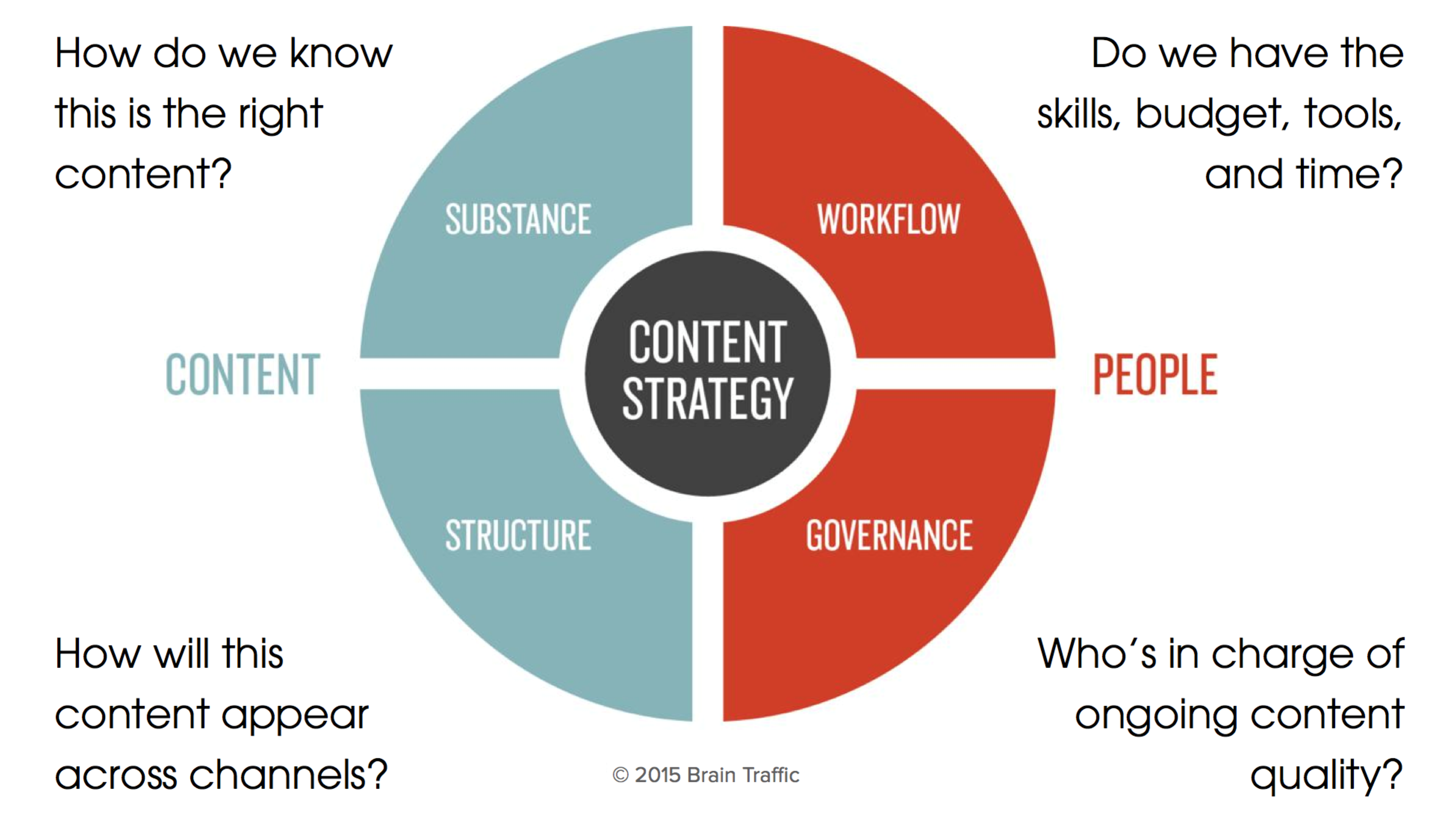
The modern marketer has heard of content marketing, they even know they need a content strategy and a content plan. But many are embarrassed to admit they don’t fully understand differences between these phrases nor what to expect in terms of output from each. Let me explain, in plain English…
Content marketing
To provide some context, let’s start with what it’s not. Marketing used to be an advertising game. Advertising is about interrupting audiences with a brand message. Brands interrupt your favourite television show with a commercial, or fight to get your attention on a website with banner ads. Advertising is pushing messages to people.
Content marketing is a pull strategy. You create content that your audience wants to consume, and therefore you are drawing your audience to your brand. Content can be in many forms. It might be a game that engages you, a white –paper that makes you a more intelligent customer, some images to inspire you, a how-to blog post to help you, an email to inform or entice you.
Successful content marketing is an ongoing commitment to create and deliver relevant and valuable content to attract, convert and retain your target audience.
Content strategy
Content strategy defines the vision and focus for your content marketing initiatives. It provides direction for how content can contribute to achieving your business goals, a framework for making content decisions, and a structure for measuring performance and success.
In terms of a documented content strategy, there are no definitive rules or templates, as each one will be tailored specifically to the unique needs of a business, their objectives and audience.

Image credit: Content Strategy 2015: Marketing, Mobile, and the Enterprise, Kristina Halvorson, Brain Traffic
Content strategies articulate your content substance, that is the topics or themes that will deliver value to your audience and contribute to business objectives. These are often referred to as content pillars. Every piece of content produced by a brand should have purpose, and be mapped back to a pillar. Put the story or the idea ahead of the medium. Align your content to your brand story and guidelines.
Your content strategy pillars are just as useful for guiding content not to do. Don’t be tempted to produce volume over quality, and don’t let the quest for engagement get in the way of your ultimate goals.
Content strategy may also cover the structure of how that content is delivered and how the user will experience the content, or the context in which it will be seen. This can include:
• Elements of user-experience design and information architecture
• Structuring content for adaptability, reuse, discoverability and automation. Producing intelligent content whereby the content can be separated from how it is displayed.
• Developing channel plans that articulate how your content pillars will come to life in each of the various publishing and distribution channels. Bearing in mind that you may be talking to different audiences and in different ways on each channel.
Content strategies should also address the people and operational components including:
• How will content marketing be resourced and what skills are required
• What is the process for creating, publishing and maintaining content
• What tools and resources will we use to create, distribute, manage and measure content and conversations
• Define a roadmap and priorities in terms of implementing the content strategy
Every content strategy should include a framework for measuring performance and success. But remember that the only metrics worth investing any energy in collecting are those that help you make decisions. Don’t fall into the trap of judging success on meaningless metrics simply because they are easy to measure. Analyse the metrics that measure the contribution of content to your business objectives,
At a board and CEO level they want the answer to “is your content working?” Report on the metrics that demonstrate this, such as:
• Volume of qualified leads to sales teams
• Online conversions
• Engagement metrics that indicate customer retention
More detailed analytics and reports are useful when looking for opportunities to make content work harder and more effectively. Look for what has been successful in driving audience reach, engagement, and conversion. Keep an eye out for trends or insights by content pillar, channel or audience.
Content plan
Whilst a Content Strategy sets the overarching strategy guiding your content marketing efforts, a content plan is an executional document. A content plan tables the tangible content assets, schedules when they will be published, and details how these stories will be distributed and amplified across multiple channels.
Content plans provide many benefits, including:
• Providing visibility of content activities across multiple teams/silos
• Identifying gaps and clashes in publishing schedules
• Balancing volume of messages in terms of both frequency and weighting against content pillar
• Identifying opportunities to capture and create both ephemeral and evergreen content
• Unifying resources, teams and priorities
Content plans can take many forms such as a calendar, a spreadsheet, or housed within a content marketing platform such as Percolate or Kapost. The format is based on preference and scalability needs.
Same same but different
Too many marketers use the terms content marketing, content strategy, and content planning interchangeably. Hopefully now you understand the distinction and relationship between the three. If you’re still confused, perhaps you should just call me.